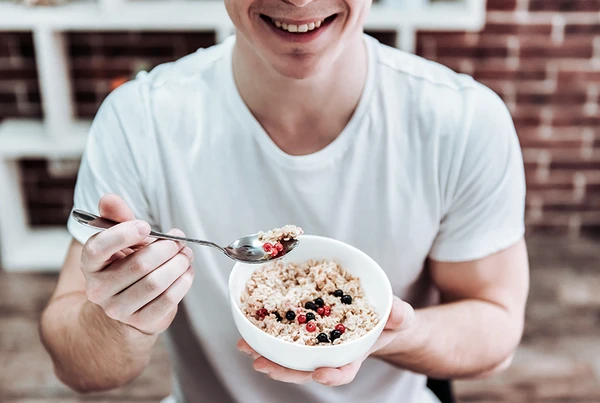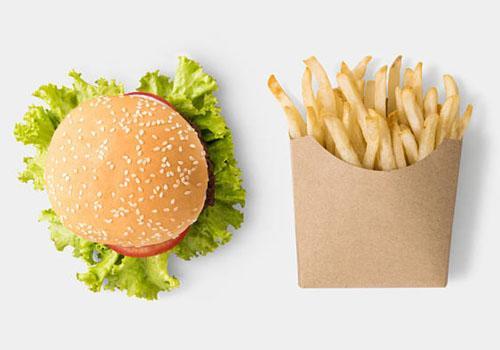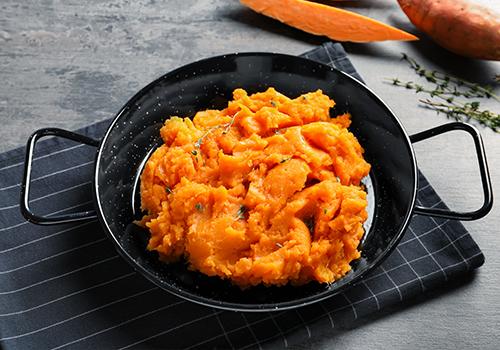How Can I Reduce Weight & Gain Muscle At The Same Time?
Back in the spandex-glowing era of the '80s, workout videos and cultural norms focused on one thing (and one thing only): how to lose body fat.
Fat was not your friend, went the tagline, and to maintain a desirable physique, you needed to eliminate as much as possible from your body. If that meant eating less and exercising more, so be it.
Thankfully, we’ve come a long way from receiving that dangerous and uneducated advice. The fact is that the body is designed to hold fat, and fat, in the form of phospholipids, play a crucial role in everything from hormone regulation to cognition.
Through sound scientific research, we understood that fat plays a positive role in muscle gain and that we need to eat a healthy amount of calories (for our specific body composition) to lose body fat and maintain muscle.
Let’s take a look at how this works.
How fat loss stacks up against muscle gain
Your journey to understand how to lose body fat begins with knowing more about the role of fat and the muscle-building process in the body. Keep in mind that this is entirely theoretical — some people actually cannot, for genetic reasons, lose body fat and gain muscle at the same time.
For our purposes, however, let’s look at how fat loss differs from muscle gain when it comes to weight loss.
The most fundamental assumption — that you need to ‘eat less’ to ‘lose weight’ — is essentially true. The fewer calories you consume, the greater the amount of weight loss in the body. And because your body turns to fat for burning energy — fat is a form of energy storage — it makes logical sense that fat loss is related to weight loss. And weight loss simply means consuming fewer calories.
But the body is a very smart and highly sophisticated machine. It has all kinds of responses, triggers, and hormones that flood the body when it feels that you’re not getting enough calories to sustain all its usual functions.
In contrast, building muscle relies on having a surplus of calories. Just ask any boxer or fitness competitor, and they’ll tell you how crucial it is for them to remain in a caloric surplus — i.e., to eat more calories than they burn — if they plan to maintain and gain muscle mass.
Right away, you can see how these two goals — fat loss vs muscle gain — seem to be at odds with one another. This is because if you remain in a caloric deficit (eating fewer calories than you burn) long enough, your body will begin to break down muscle to maintain its energy requirements.

Understanding body recomposition
To reconcile this apparent issue, let's take a look at body recomposition. Body composition refers to the numerical ratio of fat to muscle in your unique body. Body fat percentage is just one part of your body’s overall composition.
When you embark on changing that natural ratio, you’re basically trying to recompose your body’s make-up. And, in doing so, you’re essentially focusing on how to lose body fat percentage.
So, how does the body burn fat to lose weight? Well, in pursuing body recomposition as a fitness activity, you’re not losing weight — in fact, in many cases, you may actually maintain your current weight or even gain weight. But that’s because what you’re doing is changing the ratio of fat to muscle — you’re getting the muscle to replace fat, which is far healthier than simply starving yourself anyway.
To embark on body recomposition in the right way, you’ll need to carefully track both your calories and mindfully craft your training sessions for progressive overload. Here are a few other things you’ll need to keep in mind:
It’s not about weight loss
If you’re interested in learning how to lose body fat, ironically, you need to let go of the idea of losing weight. Instead, body recomposition replaces fat with muscle, and the latter is dense.
Besides changing the ratio of the two, this also changes your physique. That's because your muscles grow and get firmer. So your physique is actually more petite, sometimes even leaner, while your weight may increase because your muscles have become bigger and stronger.
It’s a marathon, not a sprint
None of these body changes is going to occur overnight. You can’t hit body recomposition with a ‘fad diet’ or quick fixes. You have to put in the work, day after day, and commit to eating for fat loss and muscle gain (we’ll discuss next what that involves).
You are what you eat
Guess what? You get to eat well to lose body fat and maintain muscle. The key here is to focus on what you’re eating and how you’re cooking or preparing it. Changing your habits and choices around this key aspect will be the most significant move you can make when it comes to losing body fat.
There are scores of workout regimes that come with meal plans and registered dietary nutritionists who will advise you on this. Generally speaking, you should:
-
Focus on increasing your protein intake.
- Incorporate complex carbs like brown rice and sweet potato into your diet.
- Make sure you include healthy fats from fish, avocados, and nuts and seeds.
- Opt for home-cooked fresh veggies where possible.
- Eliminate overly processed foods and foods high in corn syrup.

Putting calorie cycling together with strength training
Finally, we hit the last piece of the body recomposition puzzle — fitness and training.
Deciding to learn how to lose body fat and maintain muscle means you’ll need to incorporate a combination of strength training, cardio exercises, and rest and recovery days into your routine to reach your fat loss (not weight loss) goals.
You should also incorporate calorie cycling. The idea behind it is straightforward: modify your calorie intake each day based on the training and fitness activities you’ll be focusing on.
So, for example, if you’re doing strength training three times a week to start, maintain a calorie surplus — i.e., eating more than you burn — on those days specifically. And when you’re working on cardio equipment and exercises like running or HIIT (high-intensity interval training), make those the days that you’ll maintain a calorie deficit. That way, you’re eating for both fat loss and muscle gain.

How to lose body fat
So, what exactly are the fitness exercises you can focus on when you want to lose body fat?
That would be cardio exercises like:
- Kickboxing
- Tabata
- HIIT
- Running
- Cycling
- Swimming
- Dancing
- Circuit training
Anything that gets you moving and your heart rate up and going is fair game and will help you lose body fat safely and sustainably.
How to build muscle
Whether it’s a series of weight machines at the gym, working on your squat game using strength equipment like power racks, or relying on free weight exercises like rear delt flys, presses, and deadlifts, weight training is essential to building muscle.
The fact is that for your body to begin to replace fat with muscle, you need to build muscle mass. And to do this, you’ll need to lift heavy weights a few times a week and fatigue or tire out your muscles. Then, as your body uses nutrition and rest to repair your tired muscles, they become stronger and more defined.




